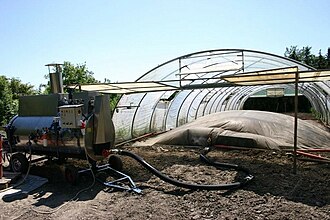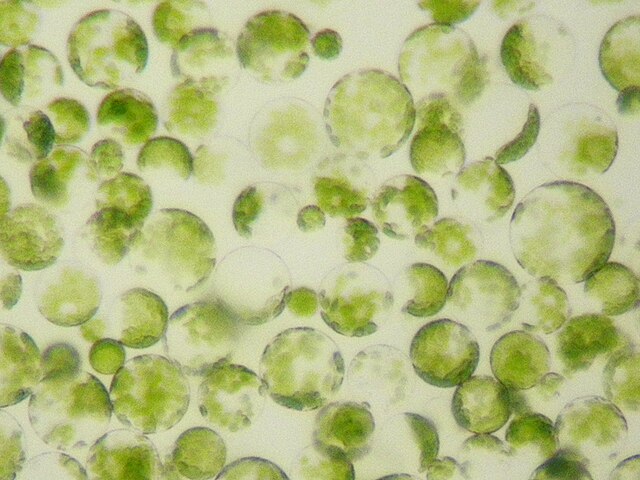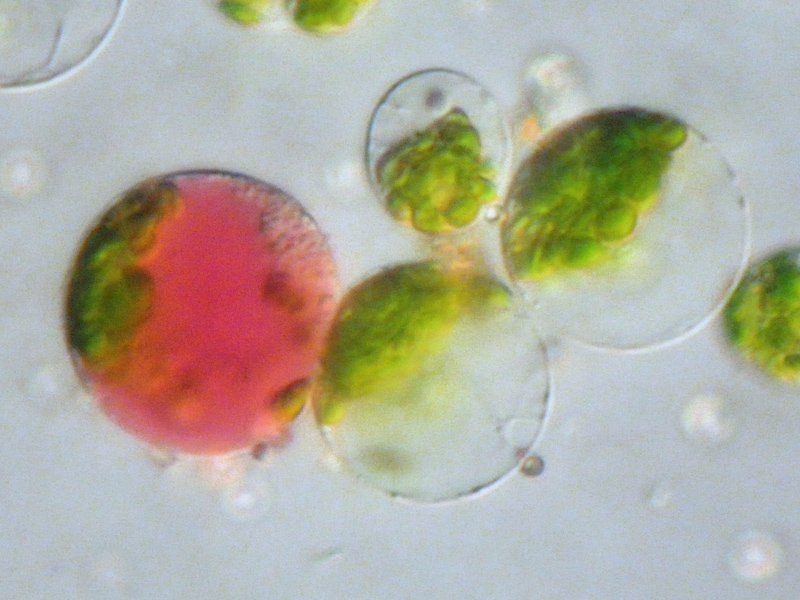Introduction
As traditional breeding techniques failed to keep pace with demand and to provide sufficiently fast and efficient systems for crop improvement, therefore another technology called tissue culture got developed.
(1) what does tissue culture mean?
Plant tissue culture is the maintenance and growth of plant cell, tissue s and organs on a suitable culture medium in-vitro (in a container e.g, test tube). Any part of plant taken out and grown in a test tube, under sterile conditions in special nutrient media is called explant. This capacity to generate a whole plant from any cell/explants is called totipotency.
(2) Environmental conditions:-
There are three important aspects of in-vitro culture namely nutrient medium, aseptic conditions and aeration of the tissue.
(a) Nutrient medium:- Culture medium contains carbon source (such as sucrose), inorganic salts, vitamins, amino acids and growth regulators. The growth regulators commonly used in plant tissue culture are auxins like 2,4-D and cytokinins, such as BAP (benzyl amino purine).Growth regulators are required for cell divisin and organ regeneration from the cultures. Culture medium may be liquid or solid. The optimum pH should be 5.7.
(b) Sterilisation:- It is essential that the explants, culture vessels, media and the instruments used for tissue culture be made free from microbes. For this purpose, explants are treated with specific anti-microbial chemicals. This procedure is called surface sterilization. The vessels, media and instruments are suitably treated with steam (autoclave), dry heat or alcohol, or subjected to filtration to make them free from microbes. This is called complete sterilization.

(c) Aeration of the tissue:- proper aeration of the cultured tissue is also an important aspect of tissue culture technique
(3) Method of plant tissue cultures:-
Plant tissue culture includes two major methods:-
(a) Type of in-vito growth – Callus and suspension cultures
(b) Type of explants:- Meristem culture, protoplast culture, embryo culture etc.
Callus and Suspension Cultures
(i) In callus culture, cell division in the explants forms an unorganized mass of cells called callus. It is maintained on a medium gelled with agar. The medium usually contains the 2, 4-D, and at BAP.
(ii) In suspension culture, explants is suspended into liquid medium containing auxin, 2, 4-D and is constantly agitated at the speed of 100-250 rpm (revolutions per minute).
(iii) In both the type of tissue cultures, with passage of time, cell/tissue dry matter increases and level of nutrient decreases. To prevent the damage of newly formed cells, part of the cultures are regularly transferred to new culture vessels containing fresh media. This process is termed as subculturing
(iv) Shoot and root regeneration in callus are generally controlled by auxin-cytokinin balance. Callus cultures are first kept on a BAP-containing medium. After some time, shoots regenerate from callus cells. When the shoots become 2-3 cm long, they are excised and transferred to an auxin-containing medium. Roots regenerate fro the lower ends of these shoots to yield complete plantlets
(v) Plantlets are removed from culture vessels and established in the field. This transfer is done by specific procedures called hardening. Hardening procedures make the plantlets capable of tolerating the relatively harsh environments outside the culture vessels
Meristem Culture:- Pathogen free clones of plants can be obtained through meristem culture because meristem (apical and axillary) is free of virus due to high concentration of auxins and rapid rate of cell division. The apical meristem accompanied by 1-2 leaf primordial may be taken. For this the apical bud is sterilized. The shoot tip is now placed over culture medium under aseptic conditions. Scientists have succeeded in culturing meristems of banana, sugarcane and potato.
Note:-
Embryo Culture:- This involves excision of young embryo from their cultivation through tissue culture. Embryo culture is used to rescue sterile embryo obtained from interspecific cross. It also allow seeding formation in seeds that lack stored food.
Haploid Culture/ Androgenic Haploid Culture/Pollen Grain culture
Anther culture is useful in mutation breeding and in maintenance of pure lines.
Protoplast fusion or Somatic hybridization:- It is fusion of protoplasts of two plants belonging to different varieties, species and even genera. The cells are first treated with enzymes pectinase and cellulose. These enzymes dissolve the cell wall and as a result naked protoplasts are produced.

The naked protoplasts are fused by electrofusion (high frequency alternating electric field with short current pulses) or chemofusion (through sodium nitrate or PEG = polyethylene glycol). It results in hybrid protoplasts. Hybrid protoplasts can be further grown to from a new plant. These hybrids are called somatic hybrid while the process is called somatic hybridization.
The somatic hybrid may have a synkaryon (single fused nucleus) or heterokaryon (having two unfused nuclei). The hybrid protoplast is called cytoplasmic hybrid or cybrid if one of the two nuclei of this get degenerated. The first somatic hybrid was obtained by Carison et. al. (1972) between Nicotiana glauca and N. langsdorfi (species of Tobacco).The intergeneric somatic hybrid is Pomato (Potato + tomato) but unfortunately, Potato did not have all the desired combination of characteristics for its commercial utilization

(4) Application of plant tissue culture:-
(i) Rapid clonal propagation:– By applicationof tissue culture it is possible to achieve propagation of a large number of plants in very short durations. This method of producing thousands of plants through tissue culture is called micropropagation. Many important food plants like tomato , banana, apple, etc. have been produced on commercial scale using this method.
(ii) Pathogen-free plants:- Recovery of healthy plants from the diseased plants is possible by meristem culture. e.g., Resistance to tongro virus and leaf hopper in rice is developed by tissue culture
Note:-
Heterosis: Phenotypic superiority of F1 hybrid over either of its parents in one or more traits is called heterosis or hybrid vigour
Tissue culture is a technique used to grow cells, tissues, or organs in a controlled, artificial environment. It is commonly used in plant biology to propagate plants, produce clones, and study the physiology and genetic makeup of plants. The method involves the use of sterile conditions and nutrient media to support the growth and development of the tissues.
Rapid Propagation: Tissue culture allows for the rapid production of large numbers of plants from a small amount of starting material.
Disease-Free Plants: Plants produced through tissue culture are typically free from diseases and pests, as the process is conducted in a sterile environment.
Conservation: It is a valuable tool for conserving rare and endangered plant species by enabling the production of many copies of a single plant.
Genetic Uniformity: The plants produced are genetically identical to the parent plant, ensuring uniformity in crop production.
A tissue culture medium typically contains the following components:
Macronutrients: Essential elements like nitrogen, phosphorus, potassium, calcium, magnesium, and sulfur.
Micronutrients: Trace elements like iron, manganese, zinc, copper, molybdenum, and boron.
Vitamins: Such as thiamine (vitamin B1), nicotinic acid (niacin), and pyridoxine (vitamin B6).
Carbohydrates: Usually sucrose is used as an energy source.
Growth Regulators: Auxins, cytokinins, and gibberellins to control cell growth and differentiation.
Agar or Gelrite: Used to solidify the medium.
Stage 0: Selection and Preparation of Explant: Choosing a part of the plant (explant) and preparing it for culture.
Stage I: Initiation: Sterilizing the explant and placing it in a culture medium to initiate growth.
Stage II: Multiplication: Transferring the growing tissue to a fresh medium to promote the multiplication of shoots or other plant parts.
Stage III: Rooting: Encouraging root development by transferring shoots to a rooting medium.
Stage IV: Acclimatization: Gradually adapting the cultured plants to outdoor conditions by transferring them from the culture environment to soil.
Micropropagation: Rapidly producing large quantities of plants for commercial horticulture and agriculture.
Genetic Engineering: Introducing new genes into plants to develop genetically modified organisms (GMOs) with desired traits.
Conservation: Preserving endangered plant species and maintaining genetic diversity.
Disease Elimination: Producing disease-free planting material by eliminating pathogens through tissue culture techniques.
Research: Studying plant physiology, biochemistry, and genetic modifications in a controlled environment.